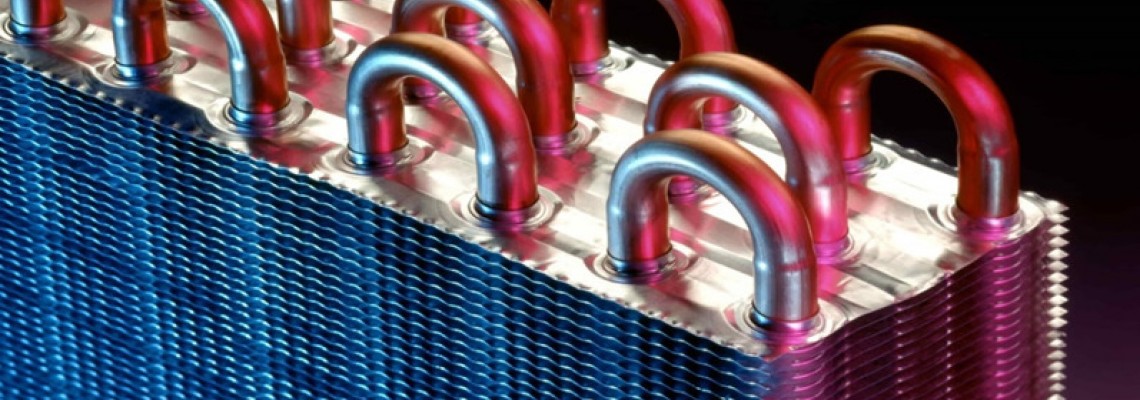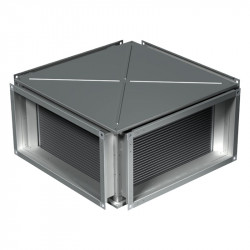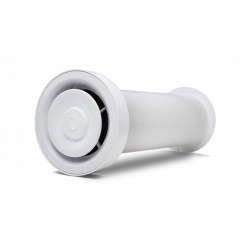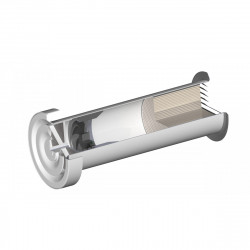
Heat recovery
The process of air recovery is a useful invention that helps to improve the microclimate of a room. It allows you to efficiently ventilate rooms, removing polluted "exhaust" air and getting fresh air from the street right in your home. However, weather conditions and temperature differences can affect the loss of heat or, conversely, the loss of coolness of rooms.
To avoid this, to effectively ventilate living spaces and to keep the necessary heat, recuperators were created. "Recuperator" means "recuperator".
This equipment is installed in the ventilation system and produces a continuous exchange between heat carriers. During the cold season, this heat exchanger prevents the heat from the exhaust air from leaving the room. When it is hot, it prevents heat from outside from entering the house.
Mechanism of operation
A recuperator is a surface double-walled heat exchanger in which two air flows collide during operation. Due to the temperature difference, the cold air is heated and the hot air cools down, leaving condensation. Thanks to this equipment, you save energy by not allowing heat to escape from the room, but still get clean outdoor air at all times.
Types of recuperators
As with any other equipment, several types of recuperators can be distinguished, depending on their design, material of manufacture, field of application and heat transfer scheme.
By design, they distinguish between:
- lamellar;
- tubular;
- rotary;
- ribbed.
By material of manufacture:
- Of plastic;
- metal;
- membrane-based.
Depending on the differences of the heat transfer circuit:
- direct flow;
- countercurrent;
- cross-current;
- direct-countercurrent.
By purpose:
- heaters (liquid air, gases);
- evaporators;
- condensers.
Plate recuperators and rotary recuperators are used in domestic ventilation systems.
Plate recuperator
The design of this device resembles a cassette, the compartments of which are separated by thin metal plates. Thanks to the separations, the air streams do not mix with each other, but through the metal have the opportunity to exchange heat energy.
Advantages:
- Cost - it is the least expensive type of recuperators.
- Size - the equipment is very compact and has a simple design.
- Mechanism of operation - no part needs electricity to operate.
Disadvantages:
- Condensation buildup - especially in winter weather, this contributes to frosting on the outside of the hood side. However, this problem is not difficult to eliminate.
The efficiency of a plate heat exchanger is 55-60%.
Rotary recuperator
The design of this heat exchanger is a cylinder with layers of corrugated metal (copper or galvanized steel) placed inside. As the cylinder rotates, air flows through it - first heated air from the room, followed by cold air from the street. The corrugated plates store the heat and transfer it to the incoming air.
The recuperator consumes up to 10 watts of electricity per hour.
Advantages:
- Low power consumption.
- Good efficiency.
Disadvantages:
- Large design size, only fits in a large air handling chamber.
- Small percentage of mixing of air flows, exhaust gas enters the incoming flow.
- High price due to the complexity of the mechanism.
- Requires constant inspections compared to other models.
- Must not be installed in rooms with high humidity.
The efficiency of the rotary heat exchanger is 70-85%.
Tube recuperator
The construction of this heat exchanger is based on a bundle of tubes through which the air flows. Due to the thin walls of the tubes, heat is easily transferred between the streams. Such recuperator provides intensive heat exchange and is often used in houses with sealed plastic windows, in eco-houses.
It has a direct-countercurrent device, installed in a single ventilation duct.
Among the advantages:
- Long operation (up to 10 years) with relatively simple and infrequent maintenance.
- Low power consumption (up to 8 watts per hour).
- Compact design.
- Elimination of stagnation inside the ventilation system.
Why it is worth installing a recuperator
Modern technologies of building and repairing houses are aimed at making airtight and durable structures, which do not always allow good air circulation. One of the most important conditions for maintaining a good microclimate in the house is the ventilation system. And the more thoughtful it is, the better. To maintain your health and also to save heat in your home, it is best to install heat recuperators of the right design for you. They will help to achieve full air exchange and at the same time maintain the desired room temperature.





Leave a Comment